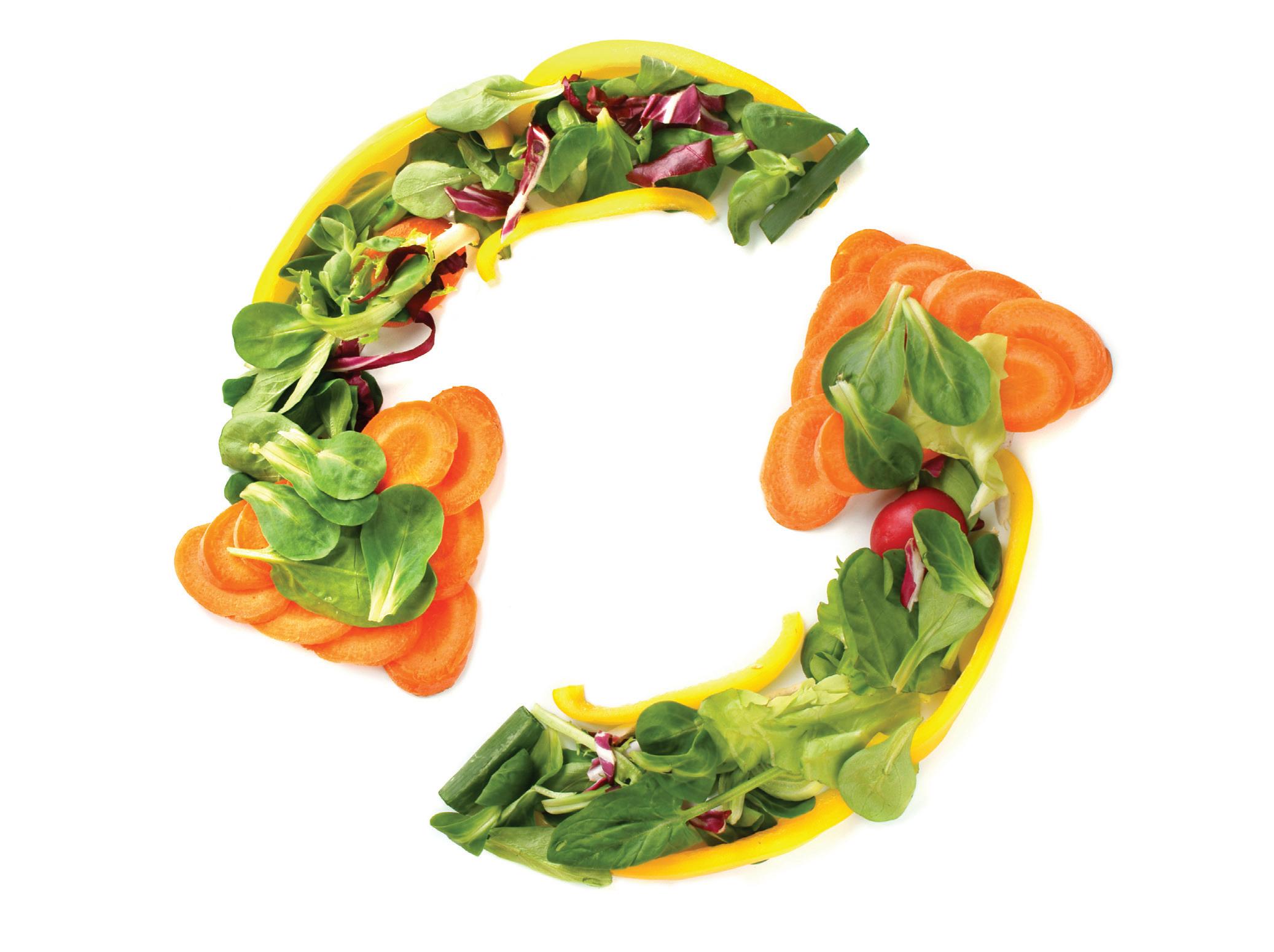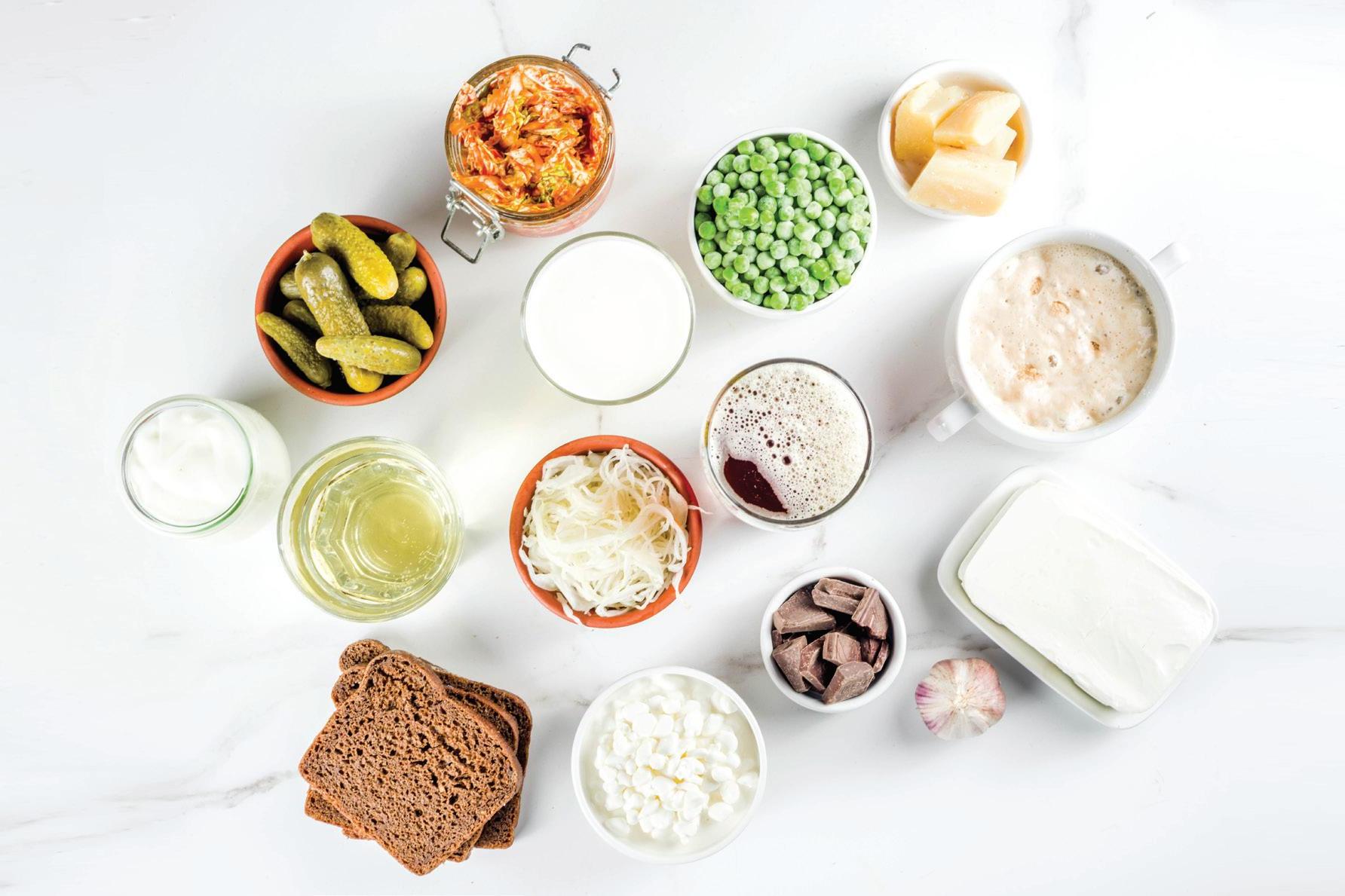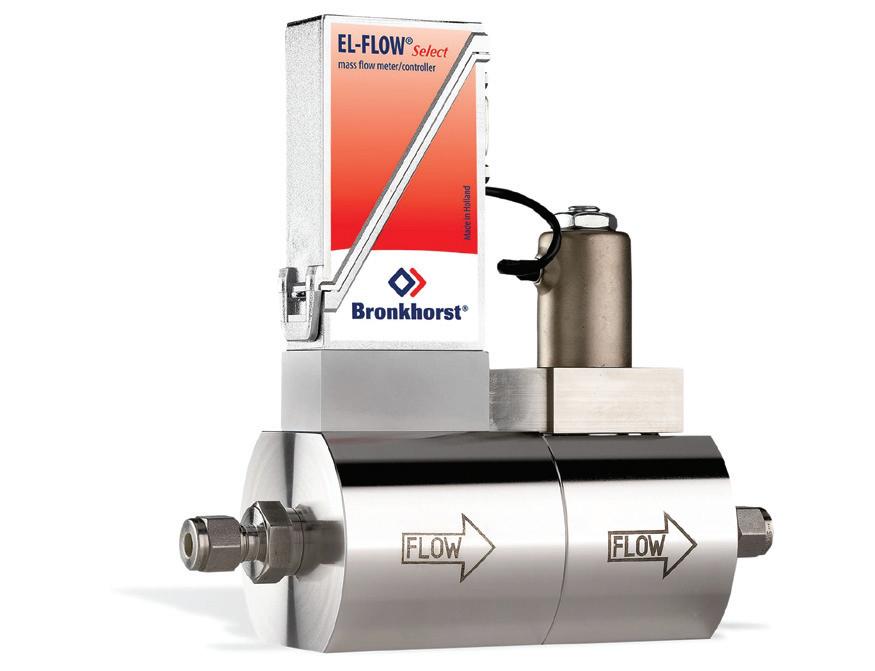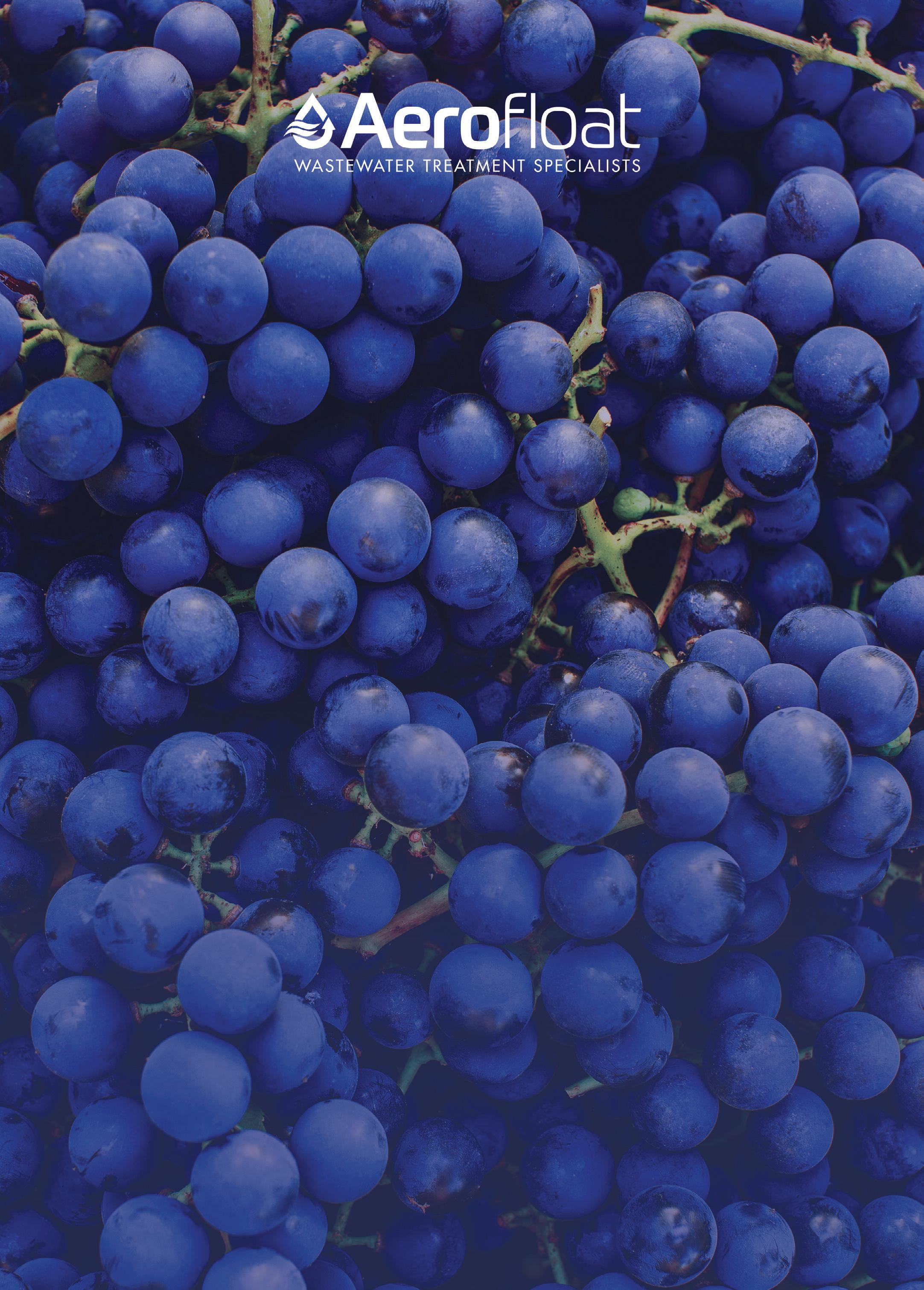
16 minute read
AWRE reunites the waste and recycling sector in person this August
AWRE
reunites the waste and recycling sector in person this August
There will be a continued focus on reducing food waste at the Australasian Waste & Recycling Expo (AWRE) being held at the ICC Sydney from 25–26 August. The AORA Organics Zone will return with exhibitors showcasing organics recycling solutions.
“Last year really showed how important the waste and recycling industry has become to the lives of Australians in this increasingly circular economy,” said Melissa Clendinen, AWRE Product Manager.
“More than ever it’s vital for the industry to get together and digest new reforms, discuss exciting opportunities and generate creative solutions, and this year’s AWRE has been designed to maximise our time together.”
The free-to-attend seminar program will include food waste topics covered by speakers from the Australia Organics Recycling Association (AORA), Food Innovation Australia Limited (FIAL), Stop Food Waste Australia and the Australian Food & Grocery Council (AFGC).
FIAL and Stop Food Waste Australia’s session will be a facilitated conversation about the National Food Waste Strategy Feasibility Study assessing whether we can meet our international commitment to halve Australia’s food waste by 2030. The conversation will examine the updated baseline, review likely scenarios and highlight new programs designed to work across industry to avoid and manage food waste.
AFGC will present on the National Plastics Recycling Scheme (NPRS). The recent National Waste Report highlights that only 14% of total plastics are recycled. While recycling rates for plastic packaging are higher at 18%, this is still unacceptably low. The scheme is launched to further develop the plastic recycling value chain in order to increase soft plastic collection, recycling and access to food-grade recycled content that is currently in short supply globally.
The two-day seminar program will also cover an array of topics across key industry actions and insights from policy and regulation, trends and insights to practical and tangible solutions from innovators shaping the future direction for Australia.
New to AWRE is the Resource Recovery Summit ‘Getting to 80%’. This half-day event on Day 1 of the expo features opening keynotes by Federal Assistant Minister Trevor Evans and NSW EPA CEO Tracy MacKey.
Facilitated sessions with panellists will explore the specific challenges in the key waste streams of Municipal Solid Waste, Commercial & Industrial and Construction & Demolition. Representatives from Cleanaway, Bing, Remondis and Veolia as well as Councillor Linda Scott from City of Sydney are confirmed.
Another new feature for the event is AWRE’s first networking dinner being held at the end of Day 1 at The Loft, Jones Bay Wharf, Pyrmont.
The Summit and Networking Dinner is hosted by National Waste & Recycling Industry Council (NWRIC) and the Waste Contractors and Recyclers Association of NSW (WCRA), with Major Partner NSW EPA.
At a glance:
What: AWRE When: Wednesday, 25 August–Thursday, 26 August 2021 Where: ICC Sydney Web: https://awre.com.au/register/
©stock.adobe.com/au/ricka_kinamoto

Gas dosing for bacterial growth
Bacteria are single-celled micro-organisms with their size in the micron range. Already for ages, bacteria have been used in the preparation of fermented foods and drinks, such as yoghurt and wine.
Bacteria are the workhorses in the modern field of biotechnology, where they are employed to produce chemically, pharmaceutically or biologically active substances as antibodies or insulin. Bioreactors form their artificial habitat. In this controlled environment, that needs to be conditioned with respect to temperature, dosing of gases and liquids and pH value, these bacteria can grow.
In a search for better mass flow equipment, a manufacturer of bioreactors came in contact with Bronkhorst. A few years ago they developed a new, small type of bioreactor with a volume of 500 mL, and they needed matching gas dosing equipment. It was the start of a fruitful cooperation.

Application requirements
Accurately and reproducibly dosing of gases as oxygen or carbon dioxide to bioreactors is essential to control bacterial growth rate. Moreover, for easy scaling-up, a full range of dosing equipment should be available, and these should be mutually interchangeable.
Process solution
The small bioreactor system has the size of a personal computer housing, with a reactor vessel of 500 mL and all kinds of sensors. For this system they needed small mass flow controllers: for low flows, but also compact. To this end Bronkhorst supplied the IQ+FLOW mass flow controller for one channel, or a package called IQM3 for three channels, to dose gases such as oxygen, nitrogen, carbon monoxide or carbon dioxide into the reactor. With IQM3 three gases can be dosed simultaneously, each in the range between 10 and 1500 mL per minute.
For this small bioreactor application, a dosing accuracy of max. ±3% is required, and the IQ+FLOW meters/controllers deliver with an accuracy of ±2%. In addition to that: the bioreactor uses a standard recipe of gases for bacteria to grow, and the composition of the recipe should be the same — within specifications — as the previous one, so reproducibility is even more important.
Bronkhorst is able to serve the entire biotechnology production range: from lab scale (1 L/min) with the compact IQ+/ IQM3 flow meters and controllers, via intermediate scale (10 L/min) with the EL-FLOW Select flow controllers, to full production scale (200 L/min).
Upscaling to another device with larger flow is easy, as all these devices use the ModBus communication protocol, so they all speak the same language. The cooperation started with small devices but nowadays Bronkhorst flow devices are also incorporated in the bioreactors of intermediate and full production scale of the manufacturer.
For further information contact AMS Instrumentation & Calibration Pty Ltd on 03-9017 8225, or Freecall (NZ) 0800 442 743, alternatively on e-mail: sales@ams-ic. com.au or visit www.ams-ic.com.au.
AMS Instrumentation & Calibration Pty Ltd www.ams-ic.com.au
©stock.adobe.com/Vladislav Nosik
PROCESSING Could guilt-free confectionery be possible?

Tightening regulations around sugar and the increasing consumer demand for better-for-you choices have a major impact on the indulgence category. As a result, confectionery manufacturers are looking for ways to reduce sugar while maintaining the naturality of their products. Valio’s dairy-based solution is designed to help reduce sugar without artificial sweeteners for confectionery manufacturers.
EU regulations concerning unhealthy foods are expected to increase and tighten in the coming years. The EU’s European Green Deal plan includes a Farm to Fork Strategy that impacts the production of food. Its aim is to make food systems fair, healthy and environmentally friendly.
“The Farm to Fork Strategy is expected to have many effects on the sales and consumption of unhealthy foods. The planned initiatives would urge product reformulation and restrict the promotion and marketing of food products that are high in sugar, salt and fat,” said Sinikka Saikkonen, Business Development Manager at Valio.
The planned measures deeply impact the market of indulgence foods, as they often contain high amounts of sugar, salt and fat. Those confectionery manufacturers who can find ways to develop products with better nutritional value will gain a competitive edge in the changing operational environment.
“People are looking for a green light for indulgence. They want to trade their regular indulgent foods for products that have less of the bad things and more of the good things. The key to successful better-for-you products is to replace a part of the ingredients [with] healthier, sustainably sourced and more natural alternatives,” Saikkonen said.
Timo Pajari, Senior Vice President, Valio Food Solutions Sales and Marketing, said consumers want guilt-free indulgences but are not willing to sacrifice on the taste or texture of chocolate and confectionery.
“Valio has the solutions and milk-based ingredients to help develop desirable and delicious confectionery for health-aware consumers. Food manufacturers can make chocolate and confectionery with reduced sugar, high protein and digestive wellness,” he said.
“Claims on limited sugar or no added sugar are preferred by consumers, and the prevalence of sugar claims is likely to grow as manufacturers aim to reassure consumers and differentiate themselves. Using artificial sweeteners is no longer an option, as consumers want their chocolate and confectionery to be as clean label as possible. Naturality is something that consumers are looking for in their indulgence products. Valio’s specialty milk powders help confectionery manufacturers to develop new better-for-you products for consumers who expect more than just normal,” Pajari said.
Valio introduced its solution at the virtual World Confectionery Conference 2021 on 1 June.
Anti-static air knife
Paper, plastic, textiles or other materials are normally electrically balanced — that is, they contain an equal number of positive and negative charges. Friction can disturb this balance, causing problems such as dust clinging to product; product clinging to itself, rollers, machine beds or frames; materials tearing, jamming or curling; sheet feeding problems; and, hazardous sparks or shocks.
EXAIR’s Gen4 Super Ion Air Knives remove static electricity by flooding an area with static eliminating ions — up to 6.1 m away. The laminar sheet of air sweeps surfaces clean of static, particulate, dust and dirt, dramatically improving production speeds, product quality and surface cleanliness.
The device incorporates EXAIR’s Super Air Knife that minimises compressed air use by inducing surrounding airflow at a ratio of 40:1. The unique amplified airflow carries the ions to the target, making it possible to eliminate static charges in less than a half second. Air volume and velocity are infinitely controllable from a ‘breeze’ to a ‘blast’ to gently wipe or forcefully blow away debris.
Available in lengths from 3″ (76 mm) to 108″ (2743 mm), the electrical ion source is shockless and there is no radioactive element. Gen4 Super Ion Air Knives have undergone independent laboratory tests to certify they meet the rigorous safety, health and environmental standards of the USA, European Union and Canada that are required to attain the CE and UL marks. They are also RoHS compliant.
Applications include surface cleaning, neutralising plastics, bag opening, printing machinery, packaging operations and elimination of painful static electricity shocks.
Compressed Air Australia Pty Ltd
www.caasafety.com.au





Coating powder for food technology
Parts coated with igus IC-05 coating polymer powder provide users in the food industry with FDA-compliant machine components that slide well. The IC-05 is designed with four times’ longer service life than IC-01, which ensures wear-resistant sheet metal.
Whether in dosing systems, on conveyor belts of filling systems or in labelling technology, sheet metal and parts are exposed to friction and wear in all these places. To increase the service life of the metallic components, igus has developed a new coating material. The sprayed-on IC-05 tribo-polymer protects sensitive and small bearing points as well as sliding surfaces. It is optically detectable due to its blue colour and is approved for use in food technology.
Nowadays, it is impossible to imagine the food industry without automated systems. But what happens if a bottle falls over in the filling line or a packet soup gets wedged in the parts chute and tears open? Scenarios that lead to unplanned plant shutdown cost time and money. Moving machine components with low coefficient of friction are in demand here. In order to give guide plates, metallic slides or even parts with complex geometries a high wear resistance, igus developed the coating material especially for use in food technology.
The IC-05 polymer complies with FDA requirements and EU10/2011 regulations making it suitable for contact with food. Its blue colour makes it optically detectable. The material reduces the coefficient of friction of the coated parts and increases the service life and availability of the equipment. It is also designed to improve product safety and reduce costs as lubricants can be dispensed with completely.
The powder material can either be sprayed onto the desired components by the user or by igus. Layer thicknesses of 60 to 120 µm are possible.
Treotham Automation Pty Ltd
www.treotham.com.au
Interactive drying simulator
Finding the optimal conditions and being able to keep them stable is the key to lower cost and energy-efficient manufacturing. When it comes to drying of food, for example, most experts agree that it is important to dry it enough to avoid microbial growth and to keep the product safe. On the other hand, minimising the drying process will save users on energy and costs. The key is to increase the input volume or the humidity levels just enough to minimise energy usage but not too little so that the end-product quality does not suffer.
To try out the Vaisala interactive drying simulator to understand the way exact humidity measurements can lead to more efficient energy use and higher yields, click here.
Vaisala Pty Ltd
www.vaisala.com
Bacon slicer
Thurne-Middleby Ltd has boosted the capabilities of its IBS1000 Bacon Slicer with a Vision System, enabling processors to achieve enhanced first time on-weight percentages.
This is the first time Thurne has deployed vision technology on one of its compact 1000 Series slicers. The system uses a high-speed camera and processing system that is able to adjust the thickness of each slice to significantly improve first time onweights. The enhancement is designed to reduce rework rates and improve overall yield, as there is less giveaway.
A completely new control system, utilising the latest platforms from Allen Bradley, provides the processing power to support the IBS1000 Vision’s slicing accuracy even at the highest blade speeds. It comes with enhanced onboard diagnostics and production data capture, all accessed via the larger, easy-to-use controls.
The bacon slicer complies with ‘ready-to-eat’ hygiene standards and uses a high-yield, semi-automatic gripper feed, providing slice thickness control and high-quality product presentation. The slicer is loaded manually via a fast reload mechanism with automatic butt end removal, which, paired with high blade speeds up to 1650 rpm, enables the slicer to surpass throughputs of 1.8 tonnes/h.
Linco Food Systems
www.linco.com.au




The challenges facing food processors are plentiful. In addition to keeping up with everchanging consumer tastes, food safety remains a top priority. Worker recruitment and retention are increasingly difficult, and there is increased pressure to operate more sustainably. The use of electro-chemical activation (ECA) technology in sanitation is helping many processors address these issues without having to make sweeping procedural changes or incur additional cost. The PathoSans system uses exclusive electrochemical activation (ECA) technology to produce powerful cleaning and sanitising solutions that can replace toxic, traditional chemicals. The system can be installed in your facility and produces solutions on demand using just salt, water and electricity. On-site generation system for the production of powerful cleaners and sanitisers food processors can clean more safely and sustainably without compromising effectiveness using electrochemical activation technology
New, proprietary ECA technology has been integrated into a compact system designed for use in manufacturing facilities. The system produces a sodium hydroxide cleaner and a hypochlorous acid sanitizer in ready-to-use concentrations. The solutions are: • As effective, if not more effective, than traditional chemicals. Killing 99.999% of common foodborne bacteria, the solutions are direct replacements for caustic cleaners and sanitisers. • Safe: The solutions are non-irritating to skin and eyes and fragrance-free for improved worker safety. • Drain and disposal friendly. • Approved for use in organic food processing. • Salt-free and safe for use on stainless steel. • Suitable for use in CIP systems. The solutions can also be stored in tanks and used with spray carts, pressure washers, bottles and more. • Versatile: Can be used to clean and sanitise equipment, floors, walls, drains, trucks and more. • Compatible with one another, so the need to rinse between cleaning and sanitizing is eliminated. • Residue-free.
All systems using ECA technology aren’t created equal, so be sure to do your research. Many systems do not produce solutions that are safe for use on all surfaces — especially stainless steel. A closer look at the benefits of ECA technology in sanitation
As we delve deeper into the details of using ECA solutions, it is important to reiterate that there are big differences in the systems that produce them, and the electro-chemical technology used. The rest of the information provided in this paper is specific to the PathoSans system from Spraying Systems Co. Other ECA systems may share some similarities with the PathoSans system, so be sure to ask about each attribute of interest to you. The differences between systems can be significant. Food safety
The PathoSans cleaner replaces concentrated chemical caustics. The PathoSans sanitiser is as effective or better than toxic and dangerous alternatives, such as quat or PAA. Both the cleaner and the sanitiser are residue-free.
Traditional chemicals contain high levels of active ingredients to ensure effectiveness even when stored for long periods of time. PathoSans solutions are produced on-site and on demand and are at full potency when used. As a result, microorganisms can be effectively eliminated by the PathoSans solutions containing lower levels of active chemicals.
PathoSans solutions saponify and remove organic fats and oils and denature and remove proteins.
In side-by-side cleaning comparisons, PathoSans solutions clean as effectively — if not more effectively — than harsh chemicals. Users report better ATP and CFU test results in addition to visibly cleaner surfaces. Worker safety, productivity, recruitment and retention
Use of PathoSans ECA solutions eliminates exposure to harsh chemicals, resulting in safer, happier, healthier and more productive workers.
Employees can clean and sanitise equipment free from cumbersome personal protection equipment (PPE). This makes the cleaning and sanitising process much more comfortable, particularly when cleaning in hot environments. The elimination of PPE also means workers can spend more time cleaning and less time adding/ removing safety gear.
The use of the PathoSans system eliminates the need for workers to dilute concentrated chemicals. The PathoSans ECA solutions are produced in ready-to-use concentrations.
Traditional chemicals can trigger mild to severe allergic reactions to skin and eyes. These health problems can result in worker absences, worker’s compensation claims and reduced productivity. The use of PathoSans ECA solutions eliminates the costly and dangerous risks associated with traditional chemicals.
Training workers to use the PathoSans system and solutions is easy and straightforward. System training can be completed in less than an hour, and cleaner and sanitiser usage training requires just a few minutes. Sustainability improvements
PathoSans™ ECA solutions are drain and disposal friendly. There is no need for wastewater treatment or the risk of fines for improper disposal. In fact, processors gain the added benefit of highly effective drain sanitation during PathoSans sanitiser disposal.
Clean labels and organic production are high priorities for many food companies. PathoSans ECA solutions are approved for organic production.
Additional benefits of on-site generation of PathoSans solutions include the elimination of pollution due to the transportation of chemicals and the disposal and recycling of chemical containers.
Now you can produce a highly effective cleaner and disinfectant on demand right in your facility ensuring you always have a reliable supply. Plus, you’ll have all the chemistry you need to clean, sanitise and disinfect your plant. The solutions produced by the PathoSans generator can be used to clean and disinfect equipment, tanks, work/break areas, floors, bathrooms and more.










